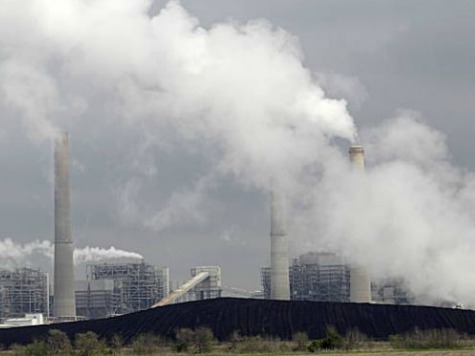
In the run-up to the “People’s Climate March” scheduled for September 21, the non-partisan U.S, General Accountability Office (GAO) just doubled its estimate for coal plants expected to retired to comply with the Obama Administration’s new Environmental Protection Agency (EPA) over the next decade.
EPA recently proposed or finalized four regulations that will negatively impact coal-fired generation that provides 37% of America’s electricity. New regulations include:
(1) Cross-State Air Pollution Rule;
(2) Mercury and Air Toxics Standards;
(3) Cooling Water Intake Structures regulation; and
(4) Disposal of Coal Combustion Residuals regulation.
The GAO in 2012 stated that “between 2000 and 2011, 150 coal-fueled units with a total net summer generating capacity of 13,786 MW have been retired.” The GAO said that in response to regulations and factors such as low natural gas prices, companies might retire or retrofit about 7%, or one in 13 existing coal-fueled plants.
The GAO warned at the time that these actions may “increase electricity prices” and “affect reliability–the ability to meet consumers’ demand—in some regions.” They recommended that the EPA, Department of Energy, and Federal Energy Regulatory Commission develop and document a formal, joint process to monitor industry’s progress responding to these regulations.
But the EPA in June 2014 proposed additional regulations to reduce carbon dioxide emissions that will also affect these coal-fired units. The GAO’s new report estimates the impact of the new regulations over the next decade will shut-down about 13% or almost one in seven coal-fueled plants.
The updated impact will result in the loss of 42,192 megawatts, over three times the amount of production shuttered between 2000 and 2011. GAO emphasized “This level of retirements is significantly more retirements than have occurred in the past.”
Regional transmission organizations and industry officials agreed that the retirements could have effects on reliability in certain regions, according to a report in Roll Call.
Residential utility rates rose in every year of the Obama Administration according to the U.S. Energy Information Agency (EIA). Despite falling prices for coal, oil and natural gas for the year ending June 2014, U.S. electricity rates out-paced inflation during the period by rising from 10.47 cents per kilowatt hour to 10.75 cents per kilowatt hour. The rise in residential electricity costs last year is directly related to moth-balling of low cost coal plants and the doubling of expensive solar and wind generating capacity.
Chriss Street suggests that if you are interested in energy issues please click on Independent Scotland Would Generate $17,217 Per Family in Energy Taxes.

COMMENTS
Please let us know if you're having issues with commenting.